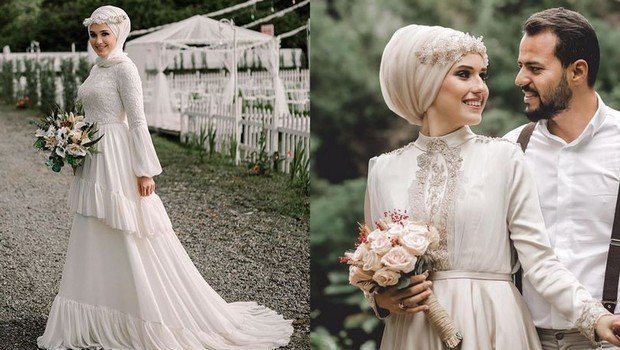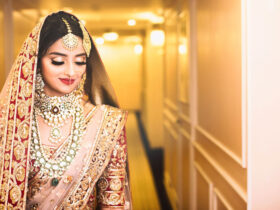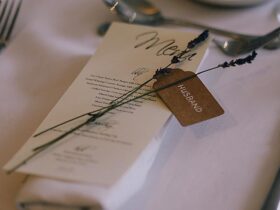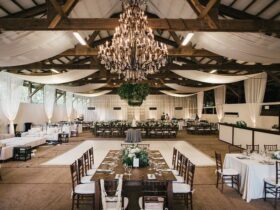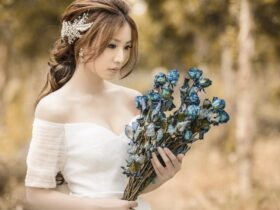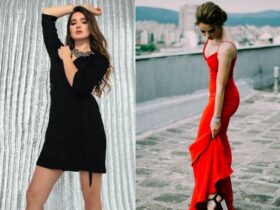There is a lot to think about when crafting your perfect Wedding Gown look. From your shoes to everything between your hair. But if you are a Muslim bride who wears a hijab, the second factor you have to consider has yet to come
Muslim women and men need to be covered and started wearing civil dressings. When they hit the age according to religious guidelines. However, it is clear that Islam is not a religion of compulsion. And anyone can be forced to cover. This is why some women wear a hijab and Wedding Gown do not; That’s also why women (of different ages) wear it (and if so) to feel ready for that step. See about How to Choose Your Wedding Jewelry.
Hijab is also not a one-size-fits-all and can vary based on culture and upbringing. No one includes this piece every woman often believes in her personal style. Which means brides do the same. We spoke to expert LaTerry Abdulnoor Yaseen Mohsin Wedding Gown. The importance of hijab and how Muslim brides can balance faith and fashion on their wedding day.
Hijab Styling Tips
Hijab can be as diverse as the women who wear it. Some brides prefer a simple style while others go for glamorous looks. “I saw a hijab that would be really ornate with headpieces, gems, and stones,” LaTerry explains. “Instead of wearing a crown, the hijab itself will be your crown and sparkling liquor moment.”
Fabric
For brides, they don’t wear traditional white dresses or anything more cultural. Dress fabric complements should be purchased. LaTerry reminds her bridesmaids because it’s their wedding day. They don’t want to wear anything that will look too casual, and it’s important to invest in a quality hijab.
Color
When choosing a traditional white dress, it is very important to find a hijab color that relates to the dress. LaTerry warns when the bride goes in a white dress from head to toe. They can sometimes end up looking haunted. “Don’t be afraid to have color pop ups.”
Texture
“Don’t be afraid of pattern and texture,” LaTerry reminds her bride. If you are very specific to your color palette, just change the texture. Different factors can make a huge difference. “Sheer silk or nylon or 3D flowers or fabrics mixed with different weights can add a soft having room. The look so you’re not looking like a giant zero runs in one color,” says LaTerry.
Alterations
Since hijab is not just about covering your hair but politely grooming. There will likely be additional changes that the bride needs to add a lining to any complete part. The dress or pairing cover or proper coverage is a high neckline. A simple look of LaTerry brides is seen wearing a separate piece of clothing under their dress. But those remedies can sometimes be hot, uncomfortable, or cumbersome. If you choose a full-sleeved shirt under the dress, make it an outfit that is thin. There is a formal look, and the dress matches. LaTerry suggests looking for shirts like outdoor sports or athletic shirts because. They fit nicely and often look as formal as they can actually resist cotton, have a shining stretch.
Time
You need more time to think. The bride has to look her best during this time, because of posterity more than anything else. Time hijab just to find the right color and fabric. But there is no change, slip, and lining that needs to be done. Sometimes it is a matter of finding the right color or choosing a fabric that is more formal.
Hijab Styles
Veil or Dupatta
South Asians have their own type of wedding dress. Matching materials which come in mesh called dupatta. Traditionally, brides from the Indian subcontinent already cover their hair. Regardless of religion on their wedding day. Which makes wearing a traditional lehenga very convenient. I would decide that brides often wear a matching dupatta a lehenga to cover their hair. And it can pin the screen in a way that is just as appropriate as the coverage it needs.
Hooded Capes
So there are some weddings, sex-parts that the bride just needs to cover her hair in a short period of time. In this case, brides often choose hooded capes or hooded poncho. Specialty wedding boutiques often sell hooded capes. That is, as long as a veil but can be used to cover the hair can be large hats. Capes, or ponchos, can also be made to look more formal by adding lace, hair, feathers, pearls, or any embellishments.
Turban Style
Some Muslim women cover their hair by wearing a mandil-feta-style when the hijab- this hair is covered, but not the neck. Some women do not mind looking at the neck while others wear high neck to achieve a complete hijab look. In this case, brides can also use a formal fabric tied like a mandil-feta to cover their hair while still having the traditional veil.
Traditional Hijab
Some brides prefer not to be called out and keep their hijab traditional. In this case, the bridesmaids have their hair done in an updo by a hijab painter to tie their scarf and will recruit. Hijab, the hairstyle can be pinned down or the painter will remain faithful. You can add pleats, pearls, and layers to add volume and magic. If the style reminiscent of LaTerry brides is too complicated. It can be time-consuming and heavy: the more modern hijabi bride prefers something light, the superficial Wedding Gown. And the beauty, without all the fuss, she shares.
Read Also: Top Decorations Wedding Ideas For Your Wedding
Read Also: The Top 7 Best Wedding Cake Toppers In 2021
